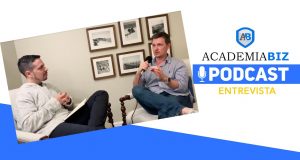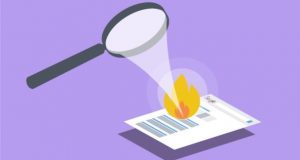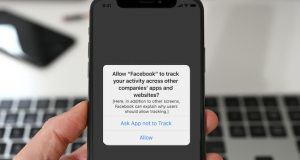[:es]El performance marketing es un modelo de Marketing Online en el que se persiguen resultados medibles y cuya rentabilidad se mide comparando el beneficio generado por las campañas de tráfico con el coste que hemos invertido en atraer ese tráfico.
Aprender a dominar esta forma de marketing es una de las formas más efectivas que tenemos a nuestra disposición para incrementar rápidamente las ventas tanto de productos propios, como productos de terceros a través de redes de afiliación.
Los resultados requieren inversión
Lo primero que debes hacer si quieres utilizar esta estrategia es mentalizarte de que el tráfico que consigas para tu página a través de tus campañas es un instrumento para el éxito de tu negocio. Cada céntimo que gastes en él es una inversión que además puede generar siempre un retorno, si aplicas las técnicas de las que te voy a hablar.
Al comienzo, el retorno serán datos valiosos sobre tu mercado, lo que yo llamo «conocimiento para el éxito», información que te indicará dónde promocionar tu producto, quién es tu cliente ideal y cómo debes formular tu oferta al mercado.
Mientras utilizas el conocimiento adquirido para optimizar tus campañas, comenzarás a recibir un retorno económico; por cada dólar o euro gastado en atraer visitas, recibirás una cantidad de ventas de tu producto.
Poco a poco y gracias a la información acumulada, los ingresos de las ventas generadas por tus campañas, superarán los gastos para atraer las visitas y en ese momento, se habla de que tu campaña de resultados ya está en una fase de ROI positivo, es decir, te está generando una ganancia por cada visita comprada.
En este punto el dinero que puedes ganar sólo dependerá del volumen de visitas al que puedes ampliar tu campaña y de tu capacidad financiera para cubrir ese aumento.
La publicidad y el tráfico
En 1898 Elias St. Elmo Lewis, un pionero en la publicidad y las ventas, formuló el concepto de AIDA.
El término AIDA es un modelo clásico que describe los efectos que produce secuencialmente un mensaje publicitario desde la perspectiva de nuestra audiencia. La palabra «AIDA» es un acrónimo que se compone de las siglas de los conceptos en inglés de atención (attention), interés (interest), deseo (desire) y acción (action).
Son cuatro escalones que el cliente debe «subir», ordenada y progresivamente, hasta tomar la decisión de comprar un producto (bien o servicio).
Yo voy un poco más allá y creo que esos escalones existen en el mensaje publicitario o anuncio, donde cada impresión de ese anuncio, texto o banner, compite por captar el interés del usuario y por conseguir llevarle a la acción (el click en el anuncio) además de existir en la propia página de aterrizaje después del anuncio, en la que hay que volver a hacer pasar al usuario por las mismas etapas para conseguir captar la atención, después despertar el interés por la oferta, seguidamente despertar el deseo de adquisición y, finalmente, provocar a compra del producto o reaccionar al mensaje
Más de un siglo después, este modelo funciona y se sigue pudiendo aplicar para poder crear campañas de publicidad online orientadas a resultados, en las que nuestro objetivo es que el ingreso que obtenemos cada vez que un usuario completa el escalón de “Acción”, sea mayor que lo que nos ha costado llevar a ese mismo usuario a través de las etapas anteriores.
Los modelos publicitarios en Internet, a diferencia de la publicidad tradicional, nos dan la posibilidad de pagar no solamente por espacio publicitario tratando de captar la atención del usuario (modelo escaparate), sino que tenemos acceso a tipos de tráfico que nos venden visitas que ya han pasado por algunos de los escalones. En los siguientes artículos veremos algunos de estos tipos de tráfico y cómo podemos utilizarlo para crear campañas de performance marketing orientadas a resultados.
Antes de repasar los tipos de tráfico, hay tres pasos fundamentales que debemos realizar, sin los que no será posible aplicar el modelo de marketing de resultados en ninguna fuente de tráfico:
- Seleccionar el producto propio o de terceros que vamos a promocionar
- Definir qué significa para nosotros que un usuario suba el escalón de «Acción»:
- Un registro
- Una venta
- Una suscripción
- Definir el valor, en dinero, de cada acción completada, normalmente será el ingreso que obtenemos por cada venta o suscripción, de forma individual o, si tenemos datos suficientes, durante todo el tiempo de vida del cliente.
- Implementar un seguimiento de cada venta también llamado seguimiento de conversiones para poder obtener la información exacta sobre qué visita nos ha generado esa venta: de qué fuente de tráfico procede, qué parametros tiene la campaña que nos la ha generado, entre otros.
Recomendaciones para comenzar
Te recomiendo siempre comenzar con un producto existente, que ya haya tenido volumen de ventas probado para que puedas centrarte solo en su promoción.
Selecciona un producto en el que el valor que obtienes por cada acción completada (venta o registro) sea lo más pequeño posible al principio. Recuerda que al principio vas a utilizar tus campañas para aprender y para «comprar conocimiento para el éxito». Este conocimiento es mucho más caro para un producto por el que obtienes un ingreso de 150 euros por venta que para un producto que te genera 5 euros. Una vez que hayas conseguido que tus campañas generen un retorno positivo por cada visita que compres, pueden generarte mucho dinero aumentando el volumen de tráfico.
Trabaja con empresas con buena reputación que dispongan de un programa de afiliados propio o con redes de afiliación reconocidas, infórmate siempre en foros y comunidades antes de registrarte en una.[:en]Performance marketing is a model of Online Marketing in which measurable results are pursued. Profitability is measured by comparing the profit generated by the traffic campaigns with the cost we have invested in attracting that traffic.
Learning how to master this form of marketing is one of the most effective ways at our disposal to rapidly increase sales of both our own products and third party products through affiliate networks.
Results require investment
The first thing you should do if you want to use this strategy is to make sure that the traffic you get to your page through your campaigns is an instrument for the success of your business. Every penny you spend on it is an investment that can also generate a return, if you apply the techniques I’m going to talk about.
In the beginning, the return will be valuable data about your market, what I call «knowledge for success«, information that will indicate where to promote your product, who is your ideal customer and how you should formulate your offer to fit the market.
As you use the knowledge gained to optimise your campaigns, you will begin to receive an economic return; For every dollar or euro spent on attracting visitors, you will receive a quantity of sales of your product.
Little by little and thanks to the accumulated information, the sales revenue generated by your campaigns, will exceed the expenses to attract the visitors and at that time, it is said that your campaign is already in a positive ROI phase. In other words, you are generating a profit for each visit purchased.
At this point, the money you can earn will only depend on the volume of visits to which you can expand your campaign and your financial capacity to cover that increase.
Advertising and traffic
In 1898 Elias St. Elmo Lewis, a pioneer in advertising and sales formulated the concept of AIDA.
The AIDA is a classic model that describes the effects that sequentially produce an advertising message from the perspective of our audience. The word «AIDA» consists of the acronyms of the concepts of attention, interest, desire and action.
There are four steps that the customer must go through until they decide to buy a product (good or service).
I believe that these steps exist in the advertisement process, where each impression of that ad, text or banner competes for capturing the interest of users and for getting them to the action (click on the ad ). As well as existing on the landing page itself, after the announcement, in which it is necessary to re-pass the user through the same stages to attract attention, then arouse interest in the offer, then awaken the desire for acquisition and, Finally, cause the purchase of the product or reaction to the message.
More than a century later, this model works and can still is applied to create results-oriented online advertising campaigns. Our goal is – the income we obtain each time a user completes the «Action» step, should be Greater than what it has cost us to take that same user through the mentioned stages.
The advertising models on the Internet, unlike traditional advertising, give us the possibility of paying not only for advertising space to try and capture the attention of users (showcase model). But we have access to types of traffic that sell us visits which have already gone through some of the steps of the process. In the following articles, we’ll look at some of these types of traffic and how we can use them to create performance-oriented marketing campaigns.
Before reviewing the types of traffic, there are three fundamental steps that we must take, without which it will not be possible to apply the results marketing model to any source of traffic:
- Select your own product or a third party product that you are going to promote
- Define what it means for you that a user does the «Action» step:
- A visit
- A sale
- A subscription
- Define the value (in money) of each completed stock. This will normally be the income we get for each sale or subscription, individually or, if we have enough data, throughout the «lifetime» of a client.
- Implement tracking of each sale also called conversion tracking in order to obtain the exact information about what visit has generated that sale. What source of traffic it comes from, what are the parameters of the campaign that has generated it, among others.
Recommendations to start
I always recommend starting with an existing product, which has already had sales and tested volume so that you can focus only on your promotion.
Select a product in which the value you get for each completed action (sale or registration) is as small as possible at the beginning. Remember that at the beginning you will use your campaigns to learn and to «buy knowledge for success». This knowledge is much more expensive for a product for which you get an income of 150 euros per sale than for a product that generates 5 euros. Once you’ve got your campaigns generating a positive return for each visit you buy, you can generate a lot of money by increasing the volume of traffic.
Work with reputable companies that have their own affiliate program or with recognised affiliate networks. Always research in relevant forums and communities before signing up for one.[:]




